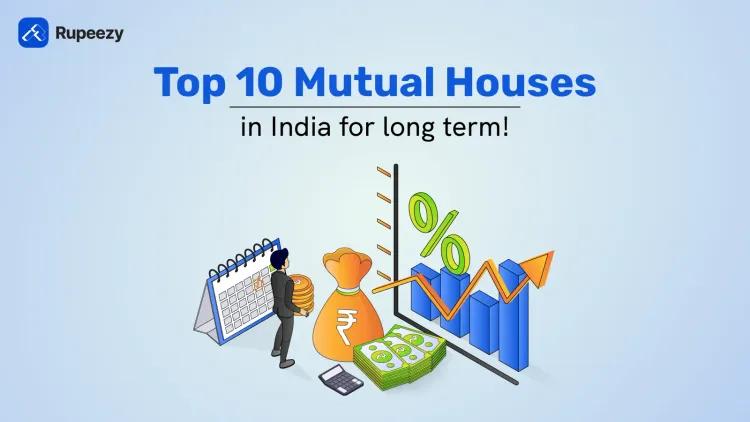What is TER in Mutual Fund (Total Expense Ratio)?


00:00 / 00:00
Mutual funds have been a prominent investing option for years. It allows investors to diversify their portfolios and generate wealth. These funds offer a great way to balance risk and return ratio. But while you invest in mutual funds, there are a few factors to consider. One such important factor is TER - Total Expense Ratio.
Whether you invest in a direct or regular mutual fund, considering TER is important. But the question is, what is TER in mutual funds? Additionally, it is important to understand how you can calculate TER in mutual funds and what factors impact it.
Well, if you are also looking for the answer, read through this guide and know every detail you need about TER here.
What is TER in Mutual Fund?
Let’s start with the TER full form in mutual funds. TER stands for Total Expense Ratio. It is the total cost associated with running a mutual fund scheme. It includes legal, operating, maintenance, and other operational costs.
The total expense ratio in mutual funds is charged by the Asset Management Companies (AMCs). The TER in mutual fund is calculated as the percentage of the fund’s daily net assets or the Scheme’s average Net Asset Value (NAV).
As per SEBI (Mutual Funds) Regulations, 1996, the total expense ratio of mutual funds is fungible. There is no upper cap limit on any one type of expense until the total TER is within the suggested limits. This means there is no prescribed limit for each type of expense, such as legal, operating, and others. However, the overall TER must remain within the base TER limit, as suggested by SEBI.
The formula for TER is as follows:
TER = (Total fund costs / total fund assets) * 100
Here;
Total fund cost refers to all the charges or fees incurred by AMC, such as the fund manager’s fees, operating fees, managing charges, distribution expenses, audit fees, and others.
Total fund assets include the value of all the assets, such as stocks and bonds, which the fund holds after reducing the liabilities on a particular date.
So, with this, you know what the total expense ratio in mutual fund is. Now, let us know about the costs and factors in detail.
Costs Involved in Calculating TER in Mutual Funds
TER in mutual funds involves various costs. Some of these are recurring, while others are one-time. These are essential to keep the fund up and running. Here are the top ones to know:
1. Management Fee
This is one of the major fees involved in the calculation. It includes the charges paid to the fund manager for his skills to manage the funds. This fee covers the salary of the fund managers and the investment team.
2. Administrative Fee
These are the charges that are incurred during the day-to-day operations of the mutual funds. The major costs involved are bookkeeping, accounting, operating, and others. It also includes registration charges and general office expenses.
3. Marketing and Distribution Fee
It is often referred to as a 12B-1 charge. This includes the charges involved in the marketing and selling of mutual funds. It includes advertising fees, marketing charges, commissions paid to brokers, promotional expenses, and other charges paid to agents for the funds.
4. Maintenance Fee
It involves the total charges incurred to keep things running. This involves the exit load, the cost of maintaining records, customer support charges, and others. This fee is essential for maintaining high-quality customer service and operational efficiency.
5. Brokerage Fee
This represents the charges paid to brokers for buying and selling securities within the fund's portfolio. It typically involves the charges incurred during the trading of stocks, bonds, and other investment instruments.
6. Legal Expenses
This includes all the charges involved in covering the professional fees. It mainly includes two charges: legal fees and audit fees. The audit fees are paid to the independent auditors, while legal fees are the ongoing expense of dealing with the legal aspects of mutual funds.
7. Other Expenses
These are the additional miscellaneous expenses that include technology charges, rent, electricity, and other expenses that are paid to third-party service providers. These are essential to keep the fund in operation.
All these expenses combined lead to the total cost of the fund, which, when divided by the asset value, offers you a TER of mutual funds. Now the question is, what is base TER in mutual funds?
What is a Base TER in Mutual Fund?
The Association of Mutual Funds in India (AMFI) defines the base TER in mutual funds. The revised TER limit as of April 2020 is as follows:
Assets Under Management (AUM) (value in INR crores) | Maximum TER as a percentage of daily net assets | |
TER for Equity funds | TER for Debt funds | |
On first 500 | 2.25% | 2.00% |
On Next 250 | 2.00% | 1.75% |
On Next 1250 | 1.75% | 1.50% |
On Next 3000 | 1.60% | 1.35% |
On Next 5000 | 1.50% | 1.25% |
On Next 40000 | For every raise of INR 5000 crores in daily net assets, the TER reduction of 0.05% | For every raise of INR 5000 crores in daily net assets, the TER reduction of 0.05% |
Above 50000 | 1.05% | 0.80% |
In addition to the above, mutual funds are now allowed an additional charge of 30 basis points (bps) when the new inflow from retail investors from beyond the top 30 cities or B30 is at least;
30% of the gross fresh inflows into the scheme
15% of the average assets under management to date of the scheme.
The higher one will be considered. This is mainly to attract investments from tier-2 and tier-3 cities.
What is a Good TER in Mutual Fund?
When it comes to good TER in mutual funds, anything below 1% is considered great. Lower TERs are preferred as this indicates only a small portion of the investment is being used as fees.
The good TER is also based on the nature of funds as below:
For actively managed funds, TER between 0.5% and 1% is considered reasonable.
For passively managed funds, TER under 0.5% is considered excellent.
Anything beyond 1.5% is considered to be high and is not a good TER for any mutual fund.
Key Factors that Impact TER in Mutual Funds
The following are the factors that will have an impact on TER in mutual funds:
1. Fund Size
The size of the funds has a direct impact on the TER. Larger fund sizes have lower TER as the total cost gets distributed over a large asset base. This reduces the expense ratio per unit. On the other hand, TER is high for small fund sizes.
2. Fund Management Style
Actively managed funds have higher TER. This is mainly due to the increased transaction and research costs. Passively managed funds do not involve the frequent buying and selling of stocks, and so lower TER. This makes passive funds an economical choice for investors.
3. Regulatory Changes
Any changes in the legal framework that govern the mutual funds can lead to changes in the charges. This can affect TER directly, thereby leading to an increase or a decrease, as the situation may be.
4. Marketing and Distribution Costs
This is one of the most common charges associated with mutual funds. If the funds spend heavily on commission, advertising, and distribution, the TER will be high. For funds with nominal expenses, TER will be low.
5. Performance Fees
This is the charge payment to the management team. It is usually a reward paid for surpassing a certain benchmark. During the strong fund performance period, this fee is high, which increases the TER. Though it will vary in different situations, yet it is important to consider when investing.
All these factors impact the TER in mutual funds and investors. Hence, you must consider these factors while investing.
How does TER in Mutual Funds Affect Investors?
TER in mutual funds can impact the investor's returns. TER has a direct impact on the scheme's NAV. When the TER is low, the NAV will be high and vice-versa. Likewise, the returns are high when the TER is low, and vice versa. Let us understand this with an illustration.
Suppose Fund A has a TER of 0.5% and Fund B has a TER of 1.5%. Now, say both these funds generated a gross return of 10% in the year. Here is the table to show net returns to understand the impact.
Fund A | Fund B | |
Gross Yearly Returns (G) | 10% | 10% |
TER (T) | 0.5% | 1.5% |
Net Yearly Returns (N=G-T) | 9.5% | 8.5% |
This makes it one of the most important parameters to consider when evaluating funds for investment. This will help you invest in the top mutual funds and earn a good return.
Every investor needs to pay attention to TER in mutual funds. It can direct you in making investment decisions. The main reasons are as follows:
1. Helps Evaluate Impacts on Returns
TER has a direct impact on your earnings. It affects the NAV of the funds, which impacts the units allotted to you. When the TER is low, it means less amount is being taken for the expenses, leaving a good amount in the fund to help you generate good returns.
2. Guide on Cost-Efficiency
As an investor, you must select more cost-efficient funds. Lower TER means less of your invested money is used to cover fund expenses. This allows a greater portion of your investment to remain in the fund, potentially earning returns. This is important if you want a long-term investment with a goal to earn high returns.
3. Facilitates Performance Comparisons
TER in mutual funds is quite an important metric in weighing performance. A lower TER indicates that the fund is managed more cost-effectively. TER analysis helps investors to choose funds that perform well and manage expenses properly. This means you gain high returns while paying lower fees.
4. Enhances Long-term Investment Growth
TER creates a considerable difference in the returns you gain over time. The impact of TER compounds over time means that, with lower TER, the overall impact will be low as well. Hence, if you have invested your money in funds with lower TER, you will benefit from the compounding effect, which will affect your growth positively.
5. Promotes Market Competitiveness
There are innumerable mutual funds available in the market. All these funds have a different TER. However, ones with lower TERs are often more attractive to savvy investors. This is because of the long-term benefits of reduced costs of these funds. An increase in demand for such funds prompts the fund managers to reduce the charges to attract more investors and generate healthy competition.
Conclusion
Whether you are looking to invest in equity or debt funds, monitoring the Total Expense Ratio (TER) is crucial. It helps you to make an informed decision by evaluating the impact of the cost on the potential earnings.
In fact, investors who constantly seek funds with lower TER can enjoy net higher returns due to effective fund management and can gain greater financial success. This approach to evaluating TER in mutual funds is quite important to both new and experienced investors alike.
So, are you ready to make your next mutual fund investment? Well, then download the Rupeezy app and explore the immense options available to you. Effectively compare each of these with Rupeezy and make the best choice for your financial future.
Check Out These Related Articles |
The content on this blog is for educational purposes only and should not be considered investment advice. While we strive for accuracy, some information may contain errors or delays in updates.
Mentions of stocks or investment products are solely for informational purposes and do not constitute recommendations. Investors should conduct their own research before making any decisions.
Investing in financial markets are subject to market risks, and past performance does not guarantee future results. It is advisable to consult a qualified financial professional, review official documents, and verify information independently before making investment decisions.

All Category









